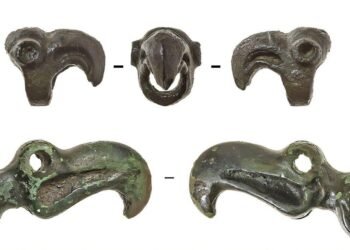A team of researchers has harnessed cutting-edge remote sensing technology, statistical modeling, and historical ecological data to unveil an astonishing revelation: the Amazon rainforest, often viewed as a pristine wilderness, conceals more than 10,000 pre-Columbian earthworks.

This research, conducted by 230 scientists from 156 institutions across 24 countries, challenges traditional perceptions and promises profound implications for environmental conservation and Indigenous land rights.
Lead researcher Vinicius Peripato, from the Brazilian National Institute for Space Research (INPE), underscored the significance of their findings, stating, “Our study suggests that the Amazon rainforest may not be as pristine as many believe, as when we seek a better understanding of the extent of pre-Columbian human occupation throughout it, we are surprised by a significant number of sites still unknown to the science community.”
To uncover these hidden remnants of pre-Columbian civilization, the team employed Light Detection and Ranging (LiDAR), an aerial remote sensing technique. By using lasers to measure variations in distances to the ground, they generated highly detailed 3D maps of the Amazon landscape. Crucially, this technology allowed them to digitally remove forest cover and explore the terrain beneath, unveiling these ancient structures.
The researchers meticulously analyzed LiDAR data from only 0.08% of the Amazon, focusing on the Brazilian states of Mato Grosso, Acre, Amapá, Amazonas, and Pará. In this small area, they identified 24 previously undocumented earthworks, ranging from ceremonial sites to fortified villages. The extent of the Amazon, which encompasses approximately 2.6 million square miles, means that there are undoubtedly many more of these concealed structures waiting to be discovered.
Dr. Hans ter Steege of Naturalis Biodiversity Center and Utrecht University indicated, “We predict that 90% of the Amazon forest has a very low chance of having earthworks,” suggesting that these modifications to the landscape are concentrated in about 10% of the region.
Furthermore, the study advanced knowledge in three key areas: archaeology, environmental science, and applied computing. The newly discovered earthworks, some over 1,000 years old, demonstrate the extent to which pre-Columbian societies actively modified the Amazon rainforest. Their engineering and land management techniques have left an enduring mark, some of which persists in the knowledge and practices of present-day communities.
Carolina Levis from the Federal University of Santa Catarina emphasized, “These people mastered sophisticated techniques for land and plant management, which, in some cases, are still present in the knowledge and practices of present-day communities that can inspire new ways to coexist with the forest without the need for its destruction.”
This groundbreaking discovery also has crucial political implications for Indigenous land rights in Brazil. By providing tangible evidence of ancestral occupation and land management, the research bolsters Indigenous peoples’ claims to the Amazon. It underscores that the forest is not a “vast, wild expanse” but rather a “biocultural” environment shaped by centuries of human interaction.
Dr. Michael Heckenberger, a professor of anthropology at the University of Florida, pointed out that these findings challenge the perception of the Amazon as an untouched wilderness, adding, “We are now seeing there was a significant degree of human intervention and variation just 500 years ago.”
The study’s statistical modeling and LiDAR technology have opened up opportunities for further exploration and understanding of ancient human influence on the Amazon. The Amazon is not just a wilderness but a testament to millennia of human coexistence with the forest.
More information: Vinicius Peripato, et al. (2023). More than 10,000 pre-Columbian earthworks are still hidden throughout Amazonia. Science, Vol 382, issue 6666. DOI: 10.1126/science.ade2541






















